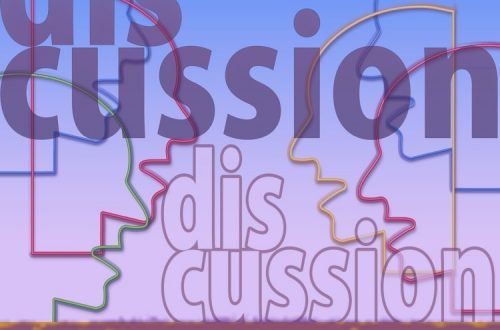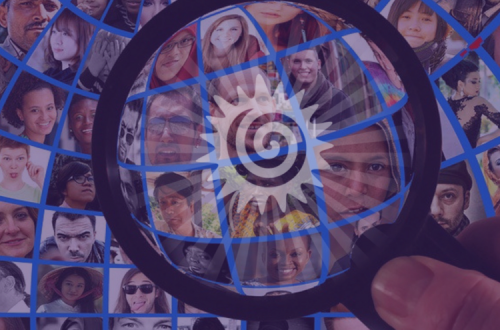Renew the Spark: Ignite Change at Your Organization
“But It’s Always Been Done This Way…”
Mandates outline policies for diversity, equity and inclusion in many organizations, but too many leaders are less than enthusiastic about implementing any meaningful plans.
There’s a general feeling of: “Y’all go over there and just do it, but don’t get us involved.”
Can you relate?
You develop a plan to implement inclusion for all employees and you’re excited about the opportunity.
Then you hit the brick wall. The brick wall with the sign posted: “We’ve Always Done It This Way.”
I bet you’ve run smack into that wall many times, right?
But there are detours around that wall, and with some committed effort, you can bring your enthusiasm into an environment that needs a breath of fresh air when it comes to diversity and inclusion.
Change Is Difficult. But Who Said Life Is Easy?
How many times have you heard that dreaded phrase, “We’ve always done it that way”?
Grace Murray Hopper, a computer scientist and US Navy rear admiral, uttered these powerful words: “Humans are allergic to change. They love to say, ‘We’ve always done it this way.’ I try to fight that. That’s why I have a clock on my wall that runs counter-clockwise.” A wise woman indeed!
Without change, we stagnate. We need to challenge ourselves.
“Change is the end result of all true learning.”
-Leo Buscaglia
Leaders have to be grounded in the leadership case/the business case, and actively participating in trainings and competency development programs with an Inclusion Lens.
Many have to remind themselves why they are in their current positions and their critical role in creating inclusive organizations. Some have been in the job so long they’ve forgotten – and admit to being burned out. They count the days to retirement.
I bet you’ve met many of these tired, worn out individuals…
But this is a great place to start: help them remember their passion – and how it can be rekindled.
Renew The Spark, Begin The Change
Ask for input on how to bring the passion back – to themselves and to current staff. Ask for ideas to hold the organization accountable to serve the increasing diversity of all the people your organization serves (is supposed to serve).
Listen to their buzz words. Build relationships with them. You’re looking for leaders who might be willing to go a little further, perhaps having them involved in pilot inclusion training. By working this way, you’re working the edges of some of the leaders who then bring issues to you. Out of this, meaningful conversations happen.
Human resource departments may provide satisfaction surveys with valuable information on productivity, moral, performance and customer service. Another approach is to ask:
- What are the competencies people need to effectively do their job?
- What do we want employees and managers to know to be able to weave in equity and inclusion into everything they do?
Reframe Your Trainings: Weave In Equity With A Fine Needle
Unfortunately, many are tired of hearing about diversity.
So, when words like diversity and inclusion are not working, shift the focus to how they – and the organization – will benefit. Frame it as building high performing teams, teams to increase productivity, to deliver better customer service.
Then weave equity and inclusion deeply into these issues. Leading an increasingly diverse team might be enough of a hook to get supervisors willing to participate.
You can then weave into that: how do you navigate difficult situations in the workplace?
That brings up the opportunity to discuss navigating hot buttons. Working with top leaders who may want to leave a legacy in their work, this is a great place to start. Ask them about organizations they think are great, ones they want employees and managers to aspire to.
Research them and follow with: “Here’s a new idea you probably know, they’re doing this, I was thinking it might be useful here.” And, because it’s connected to their ego, it’s likely to get a little momentum started.
Create a survey about critical incidents. Folks can write in about what is undermining their vision of a high-performing organization. That can provide data to share with leaders to say: we need training and competency building, as well as an organizational culture shift.
Most people in organizations I know are not competent to recognize the dynamics of race and racism in policies, navigate implicit racist bias in the hiring practices, or notice and interrupt the racist microaggressions in daily interactions.
Any organization can say they leaders are competent in EDI, but when you analyze hiring and retention practices, this statement is grossly inaccurate.
Track and analyze data by group membership from the last 5-10 years on the following:
- Who applied?
- Who was selected for the 1st and 2nd interview pools?
- Who was offered positions?
- Who accepted?
- How long did people stay?
- Who got promoted?
- What are patterns of experience in climate survey data and exit interviews?
Find The Crack And Let The Water Drip Through
When you’ve spent some time in organizations, you’ll discover one or two people who are willing to be step out and participate on Inclusion Change Teams at the divisional and department level.
Work with them. Design intentional team building and competency development for members and encourage them to take the skills and insights back to share in their units.
If you can find that crack, let the water drip in and keep adding more. Having one or two allies in middle management or leadership may take several conversations, but it can be a strong starting base.
A superb analysis model by Drs. Jackson and Hardiman, the Multicultural Organizational Development Model, can be of assistance.
You have to assess the current stage of development:
- What is the degree of unaddressed blatant harassment and discrimination or more subtle forms of domination by members of privileged groups?
- Are leaders complacent and only seeking a level of compliance with external requirements, wanting to look good to stakeholders, government leaders, and potential investors?
- Or are leaders truly committed to creating and sustaining inclusive environments where all employees are trained and held accountable to infuse equity and inclusion into everything they do?
We must have an accurate assessment of the current state before we design ways to intervene, or we may miss the mark from the beginning.
Change doesn’t happen overnight. But just as we learned how to walk – by putting one little foot in front of the other – we knew we could then run.
“From a little spark may burst a flame.”
-Dante Alighier
Be a catalyst for meaningful transformation at your organization when you master the tools and strategies needed to accelerate learning and organizational change. Discover how my virtual course, Design & Facilitate Powerful Workshops on Equity, Inclusion & Social Justice, can benefit your organization.




